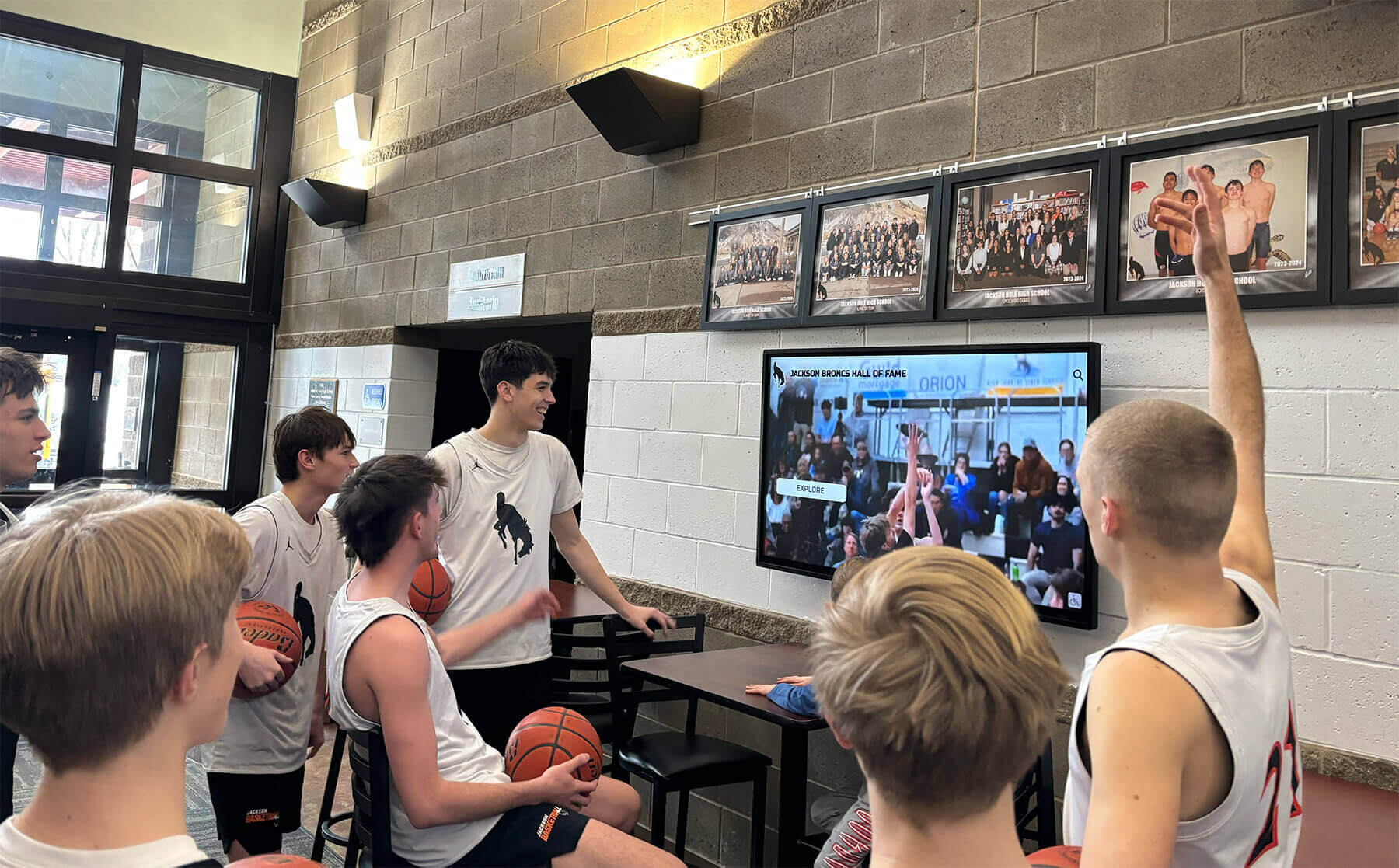The True Measure of Athletic Success: While scoreboards track wins and losses, high school sportsmanship awards celebrate something far more lasting—the character, integrity, and values that student-athletes demonstrate throughout their athletic careers. These recognition programs honor students who exemplify respect for opponents, officials, and teammates, display grace in both victory and defeat, demonstrate leadership through positive example, and embody the school's core values on and off the field. When implemented thoughtfully, sportsmanship awards become powerful tools for shaping athletic culture, teaching life lessons that extend far beyond high school, and recognizing that how you compete matters as much as whether you win.
Every Friday night, student-athletes compete across gymnasiums, fields, and courts throughout communities nationwide. Coaches diagram plays, athletes execute strategies, and crowds cheer as scoreboards tally points. Yet amid the focus on competition and outcomes, something equally important often goes unrecognized—the character and sportsmanship that define truly excellent athletic programs.
Consider the senior basketball player who helps an injured opponent to his feet after a collision, demonstrating compassion despite fierce competition. The soccer captain who confronts teammates making disrespectful comments about opponents, modeling leadership when no coaches are watching. The volleyball player who congratulates every opponent after matches, win or lose, embodying grace and perspective. These moments reveal character and values that determine who these young people become long after their athletic careers end.
High school sportsmanship award programs formally recognize these demonstrations of character, creating systematic recognition for the values schools aim to develop through athletics. Rather than replacing recognition for competitive excellence, sportsmanship awards complement athletic achievement, communicating that schools value complete student-athletes who compete with both skill and integrity.
This comprehensive guide explores everything athletic directors, coaches, and school leaders need to know about creating meaningful sportsmanship recognition programs—from understanding why character-based recognition matters and defining sportsmanship criteria through implementing selection processes and leveraging modern digital recognition displays that preserve and celebrate values-based achievement.
Understanding Sportsmanship: More Than Just Playing Nice
Before designing recognition programs, schools must clearly define what sportsmanship means within their athletic culture and why recognizing it matters beyond simply encouraging polite behavior.
Defining True Sportsmanship in High School Athletics
Sportsmanship extends far beyond basic politeness or following rules. It encompasses a comprehensive approach to competition rooted in respect, integrity, and perspective that elevates both individual athletes and entire athletic programs.
Respect for All Participants
At its foundation, sportsmanship involves genuine respect for everyone involved in athletic competition—opponents, officials, coaches, teammates, and spectators. This respect manifests through acknowledging opponents’ skills and efforts regardless of outcomes, accepting officials’ decisions even when disagreeing with calls, supporting teammates during struggles rather than criticizing mistakes, treating visiting teams and fans with hospitality and courtesy, and recognizing that everyone involved shares love for the sport despite competitive differences.
Students demonstrating respect understand that opponents make competition possible, officials enable fair play, and teammates deserve support during challenges. This perspective transforms competition from antagonistic battle into shared pursuit of excellence where everyone’s contributions deserve acknowledgment.
Integrity and Ethical Behavior
True sportsmanship requires competing with integrity even when no one is watching or when ethical behavior might disadvantage competitive outcomes. Athletes with integrity follow rules not because officials enforce them but because rules ensure fair competition, refuse to gain unfair advantages through deception or rule-bending, admit mistakes honestly rather than blaming others or circumstances, hold themselves and teammates accountable to standards beyond minimum requirements, and prioritize doing what’s right over winning at any cost.
Integrity proves challenging because it sometimes conflicts with competitive desires. The athlete who admits fouling an opponent when officials missed the violation sacrifices potential advantage for ethical principle. Schools recognizing this integrity validate that character matters more than any single competitive outcome.
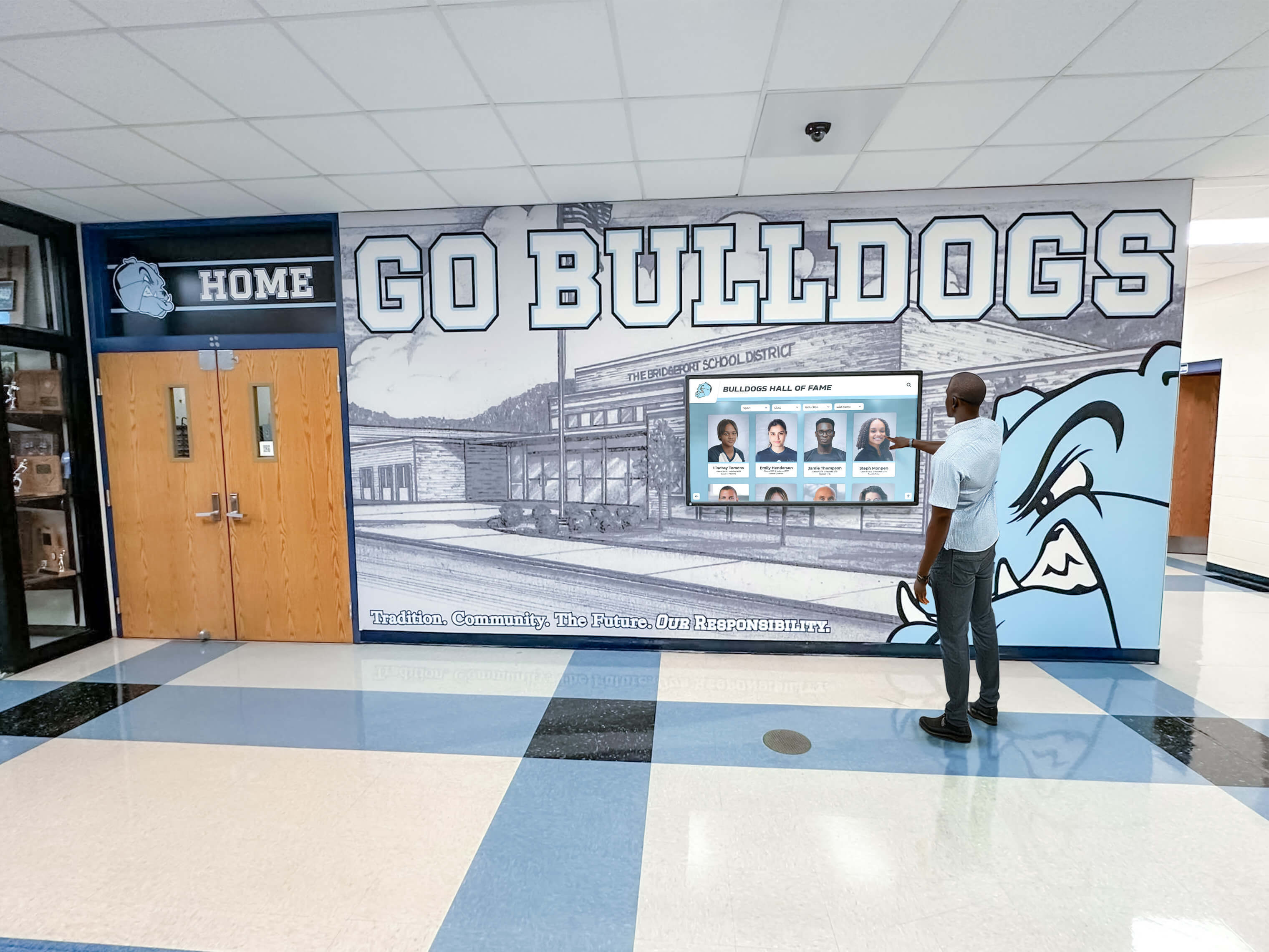
Grace in Victory and Defeat
How athletes handle outcomes reveals character more clearly than performance itself. Sportsmanship requires celebrating victories without demeaning opponents, acknowledging that winning doesn’t make athletes superior people, congratulating opponents on their performances and season, recognizing fortunate breaks or circumstances that influenced outcomes, and maintaining humility understanding that today’s victory could be tomorrow’s loss.
Similarly, handling defeat with grace involves accepting losses without excuses or blaming others, congratulating victors genuinely rather than grudgingly, learning from defeats rather than dwelling on disappointment, supporting teammates through shared disappointment, and maintaining perspective that athletic competitions don’t define personal worth.
Athletes who demonstrate grace understand that sports provide opportunities for growth and character development where lessons from both victories and defeats prove equally valuable.
Leadership Through Example
True sportsmanship involves not just personal behavior but actively promoting positive values throughout teams and athletic programs. Student leaders demonstrating sportsmanship model desired behaviors for younger athletes, intervene when witnessing unsportsmanlike conduct from teammates, encourage others during challenging moments, help create team cultures where respect and integrity are expected norms, and understand their influence extends beyond personal actions to shaping broader team character.
Leadership through example proves particularly powerful in high school athletics where younger athletes observe and emulate upper-class mentors. When seniors model outstanding sportsmanship, they establish cultural expectations that persist long after they graduate.
Why Sportsmanship Recognition Matters
Beyond simply encouraging positive behavior, formal sportsmanship recognition programs generate significant benefits for athletes, teams, schools, and communities.
Character Development With Lasting Impact
Athletic participation offers powerful opportunities for character development, but this development requires intentional emphasis rather than hoping positive values emerge automatically from competition. Sportsmanship recognition communicates explicitly which character traits schools value, validates that integrity matters as much as winning, provides role models demonstrating how to compete with character, creates expectations that ethical behavior is non-negotiable regardless of competitive pressure, and teaches lessons about respect, integrity, and perspective that serve students throughout life.
Research consistently demonstrates that students who develop strong character through structured programs show improved decision-making, stronger relationships, greater resilience during challenges, and more ethical behavior in academic and professional contexts. Sportsmanship recognition ensures character development remains central to athletic program missions rather than becoming secondary to competitive outcomes.
Positive School and Community Culture
Sportsmanship recognition influences culture throughout schools and communities, extending impact far beyond individual athletes or teams. Strong sportsmanship programs reduce behavioral problems at athletic events, improve relationships between competing schools and communities, enhance school reputations as places that develop complete students, increase community support for athletic programs demonstrating positive values, and create environments where students feel safe, respected, and valued.
Communities take pride in athletic programs known for both competitive excellence and outstanding character. This reputation attracts families seeking well-rounded educational experiences while strengthening community identity around positive values.
Complementing Competitive Excellence
Far from conflicting with competitive success, sportsmanship enhances athletic performance and team cohesion. Athletes competing with strong character show greater resilience during adversity, maintain better focus on controllable factors rather than officials’ calls or opponents’ behavior, build stronger team chemistry through mutual respect and support, earn officials’ respect potentially influencing close judgment calls, and perform better under pressure by maintaining appropriate perspective on competition’s importance.
Coaches of championship programs consistently emphasize that character and sportsmanship prove essential to sustained success. Teams emphasizing values alongside skill development typically outperform those focused exclusively on wins and losses.
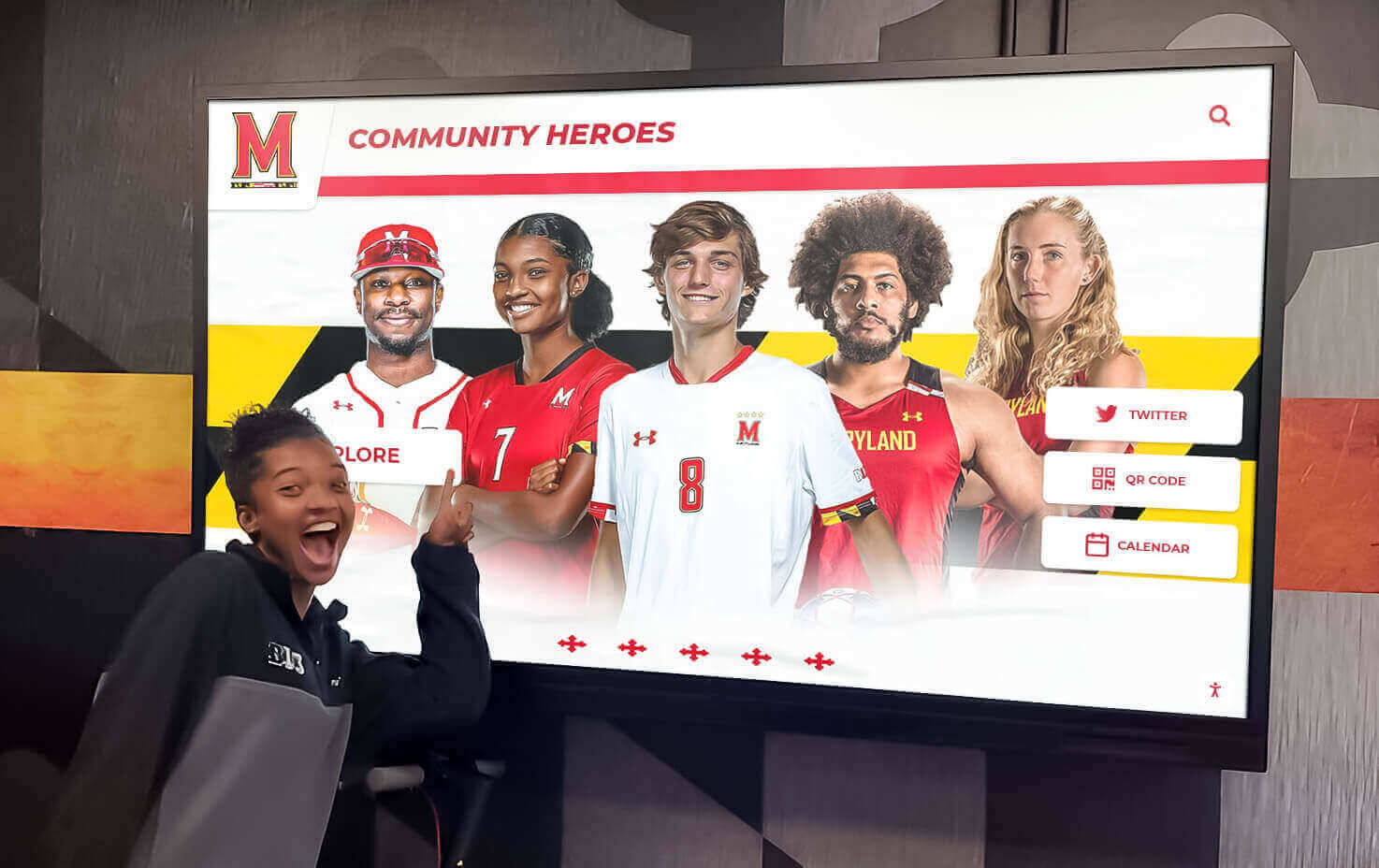
Meeting Educational Missions
Athletics exist within educational institutions with missions extending far beyond winning competitions. Strong sportsmanship programs help athletic departments fulfill educational missions by teaching respect for diversity through interactions with students from different backgrounds, developing ethical decision-making under pressure, building emotional regulation and impulse control, fostering empathy and perspective-taking skills, and demonstrating that success requires more than talent or effort—it requires character.
When athletic programs demonstrate clear commitment to character development through formal recognition, they strengthen their positioning as educational endeavors deserving of institutional resources and support rather than mere extracurricular entertainment.
Designing Effective Sportsmanship Award Criteria
The effectiveness of sportsmanship recognition depends largely on clearly defining what behaviors and characteristics merit acknowledgment. Vague criteria like “good sportsmanship” provide insufficient guidance for consistent, meaningful recognition.
Establishing Clear, Observable Criteria
Effective sportsmanship awards recognize specific, observable behaviors rather than abstract character traits difficult to assess consistently.
During Competition Behaviors
Observable sportsmanship during competitions provides concrete evidence of values in action. Clear criteria might include helping injured opponents regardless of game situation or team, accepting officials’ decisions without arguing or demonstrative reactions, congratulating opponents after plays, innings, or matches, maintaining composure and self-control during intense or controversial moments, encouraging teammates positively rather than criticizing mistakes, demonstrating effort and engagement regardless of score or playing time, and showing respect through body language, facial expressions, and communication.
These specific behaviors can be observed and documented by coaches, officials, and even community members attending competitions, providing evidence supporting recognition decisions.
Practice and Team Interactions
Sportsmanship extends beyond game situations to daily practice behaviors often visible only to coaches and teammates. Recognition criteria should consider athletes who welcome and mentor newer or less skilled teammates, maintain positive attitudes and work ethic during challenging practices, support teammates’ successes without jealousy or resentment, accept coaching feedback constructively and implement suggestions, demonstrate leadership by holding themselves and others accountable to standards, and contribute to positive, respectful team culture through daily interactions.
Practice behaviors often reveal character more reliably than competition situations where visibility and pressure influence behavior. Athletes consistently demonstrating sportsmanship when no external audiences are watching show authentic commitment to values.
Academic and Community Conduct
True character extends across all contexts, not just athletic settings. Comprehensive sportsmanship criteria consider representing schools positively in academic settings and community, taking responsibility for academic success rather than expecting special treatment, participating in community service or volunteer activities, demonstrating respect for teachers, staff, and community members, and understanding that being a student-athlete involves responsibility beyond the playing field.
Schools emphasizing that sportsmanship requires consistency across all contexts develop more complete student-athletes prepared for life beyond athletics.
Specific Challenging Situations
Particularly meaningful sportsmanship recognition acknowledges positive behavior in situations where maintaining composure and integrity proves difficult:
- Maintaining sportsmanship after controversial calls in close competitions
- Demonstrating grace immediately following significant defeats
- Supporting teammates who make costly mistakes or struggle with performance
- Refusing to retaliate when opponents engage in unsportsmanlike behavior
- Maintaining focus and effort when playing time is limited or role changes
- Showing leadership when team culture is challenged by conflict or adversity
Recognition highlighting these challenging circumstances communicates that schools understand sportsmanship proves hardest precisely when it matters most, validating athletes who demonstrate values under pressure.
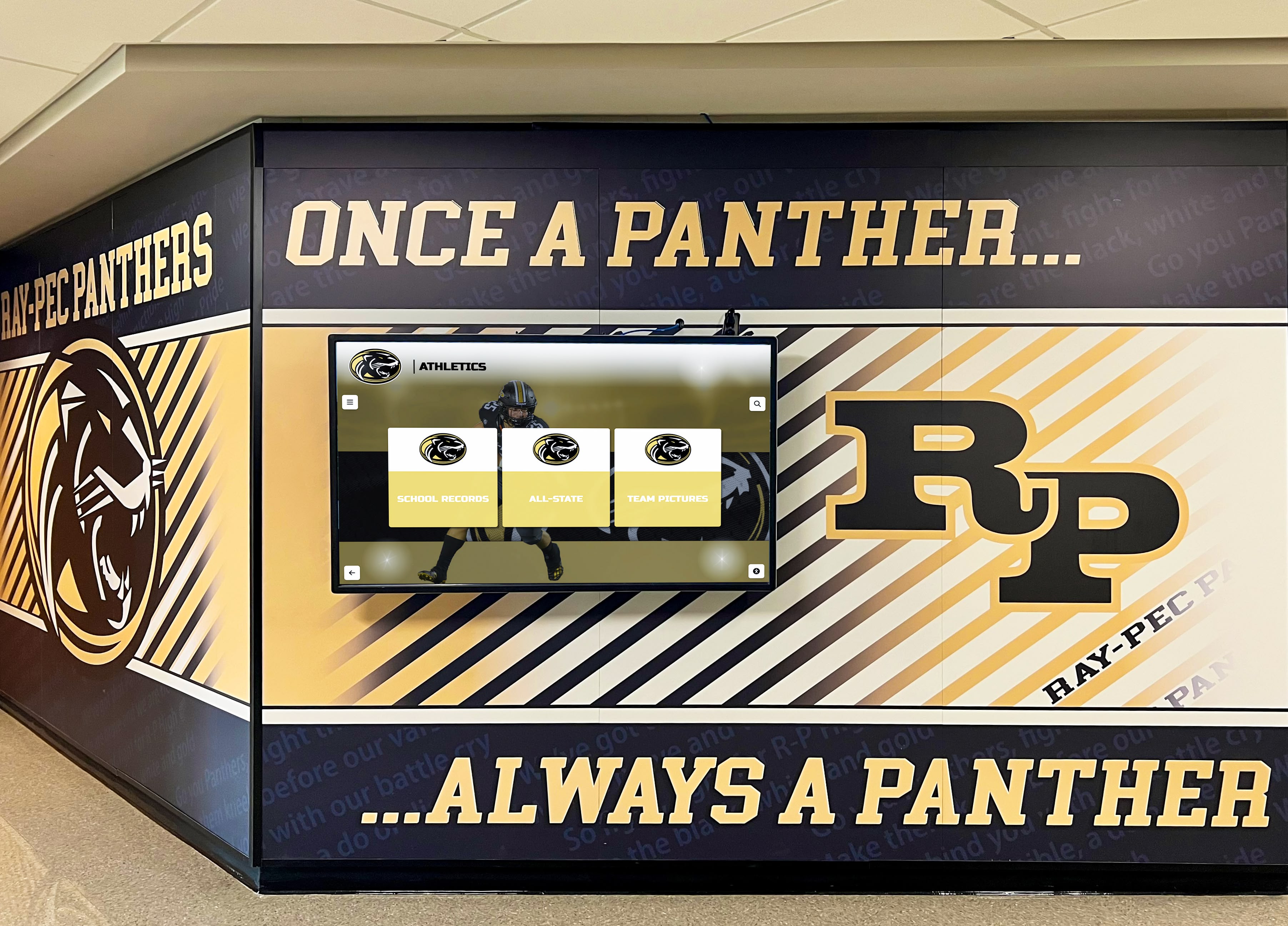
Balance Between Season-Long and Single-Event Recognition
Schools must decide whether sportsmanship awards recognize sustained behavior throughout seasons or exceptional demonstration in specific situations.
Season-Long Sportsmanship Awards
Many programs present end-of-season awards recognizing athletes who consistently demonstrated outstanding sportsmanship across entire seasons. Season-long recognition rewards sustained character rather than isolated positive moments, acknowledges athletes who reliably model values regardless of circumstances, provides time for coaches and teammates to observe patterns rather than reacting to single incidents, and communicates that schools value consistent integrity over flashy individual gestures.
Season-long awards typically involve coach nomination and selection based on comprehensive observation, potentially including input from teammates through confidential voting or feedback processes.
Weekly or Game-by-Game Recognition
Some schools complement season awards with more frequent recognition highlighting specific demonstrations of sportsmanship in recent competitions. Regular recognition provides more opportunities for different athletes to receive acknowledgment, celebrates specific, memorable examples of positive behavior while still fresh, maintains focus on sportsmanship throughout seasons rather than only during end-of-season reflection, and allows recognition of athletes who may not receive season-long awards but demonstrate notable sportsmanship in specific situations.
Weekly sportsmanship recognition might accompany athlete of the week programs, ensuring character receives equal emphasis with competitive performance.
Balancing Both Approaches
The most comprehensive programs implement both levels of recognition, creating systems where weekly or monthly acknowledgment celebrates specific examples maintaining ongoing focus on sportsmanship, while season-long awards honor sustained demonstration of values earning greatest recognition. This multi-level approach provides frequent positive reinforcement while maintaining prestigious season-long awards that athletes aspire to earn.
Gender Equity and Cross-Sport Consistency
Fair sportsmanship recognition ensures equitable opportunities across genders and all athletic programs regardless of sport profile or competitive level.
Equal Recognition Opportunities
Schools must ensure sportsmanship recognition reaches male and female athletes equally. Track recognition distribution data to verify equal acknowledgment, establish separate male and female awards when appropriate to guarantee equity, apply identical criteria and selection processes across genders, and provide equal visibility and celebration for sportsmanship winners regardless of gender.
Equitable recognition communicates that schools value character in all athletes equally rather than disproportionately emphasizing certain programs or genders.
Adaptation Across Different Sports
While core sportsmanship principles remain consistent, specific observable behaviors vary across sports. Selection criteria should acknowledge sport-specific contexts while maintaining consistent underlying values. For example, contact sports might emphasize helping opponents up after physical plays, individual sports might focus on congratulating competitors after matches or races, team sports might highlight supporting all teammates regardless of playing time or role, and lower-profile sports might consider athletes’ positive representation of programs with minimal external recognition.
Adapting criteria appropriately while maintaining consistent values ensures fair recognition across diverse athletic programs that compete under different circumstances and cultural norms.
Implementing Selection Processes and Nominations
Thoughtful selection processes ensure sportsmanship recognition feels fair, comprehensive, and meaningful rather than arbitrary or disconnected from actual behavior.
Multiple Input Sources
Gathering observations from various perspectives provides more complete pictures of athlete character than single-person assessments.
Coach Evaluations
Head and assistant coaches observe athlete behavior daily in practices, competitions, and team activities, positioning them to provide informed assessments. However, relying exclusively on coach selection risks perceived favoritism or inconsistency based on individual coach priorities. Structure coach input through standardized evaluation forms assessing specific sportsmanship criteria, requiring written documentation of observable behaviors supporting nominations, involving both head and assistant coaches providing multiple perspectives, and encouraging coaches to consider input from team captains or senior leaders familiar with team dynamics.
Teammate Perspectives
Peer feedback often reveals character most accurately since teammates observe behavior in contexts coaches don’t see—locker rooms, team bus trips, social situations, and informal practice moments. Implement confidential peer voting or feedback processes where athletes nominate teammates demonstrating strong sportsmanship. Structure peer input through specific prompts asking about observable behaviors like “Which teammate consistently encourages others?” or “Who demonstrates respect for opponents and officials most reliably?” Ensure confidentiality so athletes provide honest assessments without social pressure.
Official and Opposition Feedback
Game officials and opposing coaches observe athlete behavior from unique perspectives. Consider establishing processes for gathering official feedback after competitions, particularly regarding athletes who demonstrated notable sportsmanship, requesting opposing coaches provide observations about athletes who impressed them with positive behavior, and incorporating this external perspective into recognition decisions.
External validation from officials and opponents adds powerful credibility to sportsmanship recognition while sometimes highlighting positive behavior school staff didn’t observe.
Self-Nomination and Reflection
While athletes shouldn’t select themselves for awards, self-nomination processes requiring athletes to reflect on sportsmanship and identify examples from their experience encourage intentional character development. Request athletes describe situations where they demonstrated sportsmanship this season and explain why those moments mattered, reflect on sportsmanship challenges they faced and how they handled them, and identify teammates they believe exemplify strong sportsmanship and explain why.
Self-reflection prompts help athletes internalize values while providing selection committees with additional context beyond external observations.

Selection Committee Best Practices
Many schools form sportsmanship award selection committees rather than designating single individuals for decisions. Committee approaches offer important advantages including multiple perspectives reducing individual bias, diverse representation ensuring various voices influence decisions, shared responsibility for difficult choices, and transparent processes building community confidence in recognition fairness.
Effective committees typically include athletic director or activities coordinator, coaches from different sports providing cross-program perspectives, faculty representatives ensuring academic perspective, student leaders offering peer insight, and potentially community members or officials providing external perspective.
Establish clear committee protocols including standardized evaluation criteria all members apply consistently, confidential deliberation processes protecting nominee privacy, documentation requirements ensuring decisions are evidence-based rather than subjective impressions, and transparent communication explaining how selections were made without revealing confidential nomination details.
Addressing Difficult Situations
Even thoughtful selection processes encounter challenges requiring careful handling.
When No Athletes Meet Standards
Some seasons or teams may not include athletes whose sportsmanship merits recognition. While uncomfortable, declining to present awards maintains credibility and communicates that recognition requires genuine achievement rather than automatically rewarding someone regardless of merit. Consider establishing minimum standards all recipients must meet, reserving the right not to present awards when standards aren’t met, using absence of recognition as teaching moment about expectations and importance of values, and working proactively to develop sportsmanship so future seasons include worthy recipients.
Controversial Athletes With Mixed Records
Athletic directors sometimes face dilemmas where athletes demonstrate strong sportsmanship in most situations but have notable incidents contradicting positive behavior. Establish clear policies about how negative incidents affect recognition eligibility—do single incidents disqualify athletes regardless of overall patterns, or do awards consider preponderance of behavior across seasons? Ensure consistent application of policies regardless of athlete profile or competitive importance, and consider whether timing matters—does behavior early in seasons carry equal weight to more recent conduct?
Transparent policies applied consistently maintain credibility even when specific decisions disappoint certain stakeholders.
Balancing Competitive Achievement and Character
Some school communities expect sportsmanship awards to recognize star athletes while others believe recognition should emphasize less prominent athletes demonstrating strong character. Define program philosophy clearly—do sportsmanship awards recognize outstanding character regardless of competitive profile, or do they require both character and athletic achievement? Communicate philosophy transparently so community understands recognition purposes and criteria.
Both approaches have merit. Programs emphasizing that any athlete can earn sportsmanship recognition regardless of talent or playing time create inclusive opportunities. Programs requiring both character and competitive excellence emphasize complete student-athlete development.
Modern Recognition Solutions: Digital Displays and Interactive Platforms
While traditional plaques and certificates provide meaningful recognition, modern digital solutions transform how schools celebrate and preserve sportsmanship achievement while extending recognition’s visibility and impact.
Interactive Touchscreen Recognition Displays
Digital recognition displays deployed in athletic facilities create permanent, engaging celebration of sportsmanship that students, families, and visitors encounter regularly throughout years.
Comprehensive Profile Capabilities
Unlike plaques listing only names and years, digital platforms create rich profiles telling complete stories about sportsmanship award recipients. Profiles can include detailed descriptions of specific behaviors and situations demonstrating character, quotes from athletes reflecting on what sportsmanship means to them, testimonials from coaches explaining why athletes earned recognition, photos showing athletes in competition and team settings, video clips capturing memorable moments of positive sportsmanship, information about athletes’ other achievements and post-graduation plans, and connections to related recognition including academic honors and athletic achievements.
This depth transforms basic acknowledgment into inspiring narratives that teach younger athletes what sportsmanship looks like in practice.
Searchable Historical Archives
Digital systems preserve sportsmanship recognition indefinitely without physical space limitations. Schools can document every sportsmanship award recipient across decades, creating searchable databases organized by year, sport, or athlete name. This permanent record provides lasting recognition for athletes and families while documenting program values across generations.
Alumni can return years after graduation to show their children and grandchildren their high school sportsmanship recognition—impossible with traditional plaques that get removed when space runs out or buildings are renovated.
Easy Content Updates
Unlike engraved plaques requiring professional services and extended timelines for updates, digital displays update instantly through intuitive content management systems. Athletic directors or coaches can add new sportsmanship award recipients within minutes of selection, publish recognition immediately following season-ending ceremonies, update profiles as athletes progress through college or careers, and modify content to fix errors or add additional information.
This flexibility ensures recognition remains current and relevant rather than becoming outdated display gradually losing connection to current students and programs.
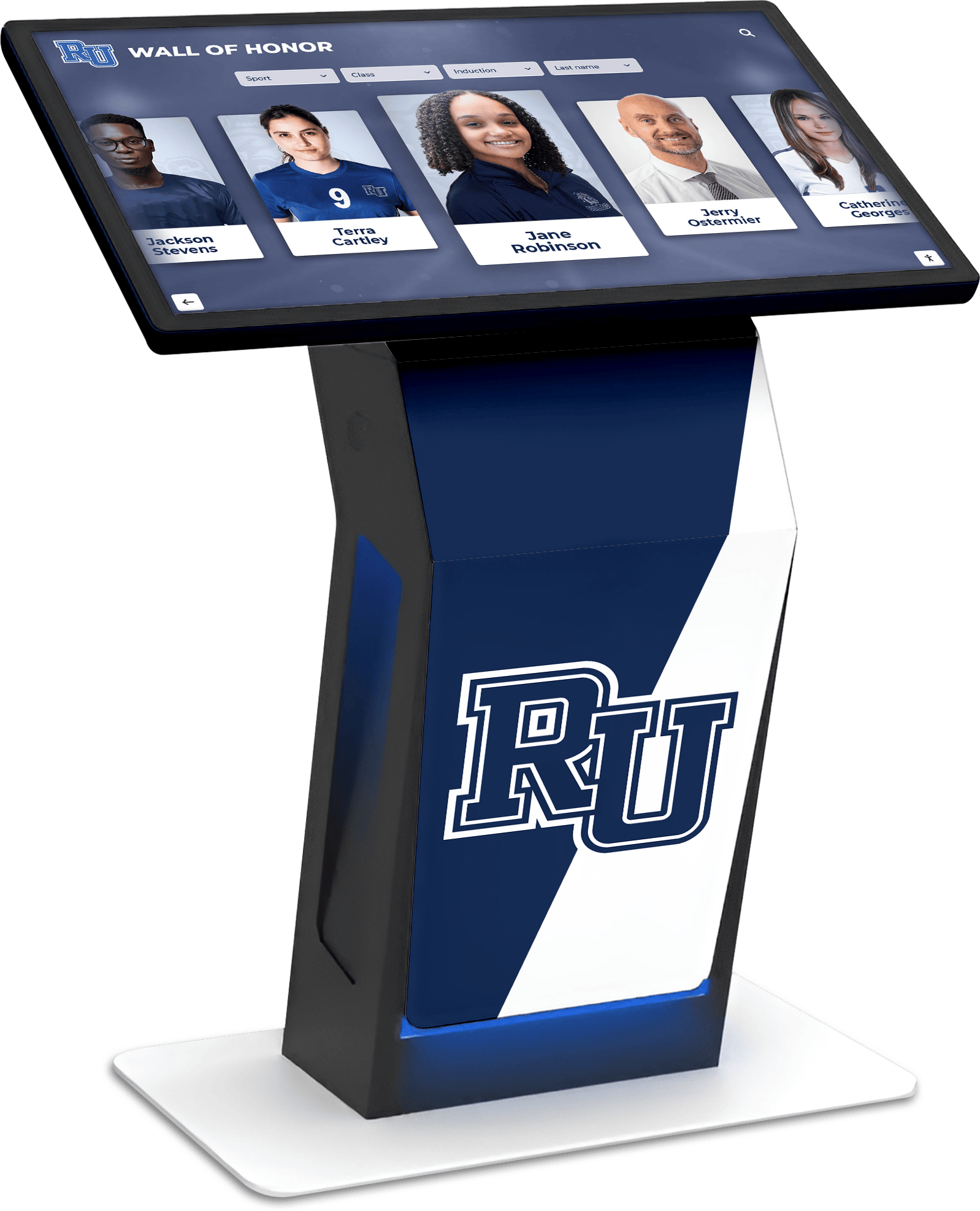
Solutions like Rocket Alumni Solutions provide purpose-built platforms designed specifically for athletic and academic recognition, combining intuitive interfaces that school staff can manage without technical expertise, flexible content templates optimized for various recognition types, robust multimedia support integrating photos, videos, and text seamlessly, and analytics showing how visitors engage with recognition content. These specialized platforms eliminate the complexity of generic digital signage while providing capabilities specifically aligned with school recognition needs.
Integration With Broader Recognition
The most effective digital displays integrate sportsmanship recognition within comprehensive athletic recognition systems that also showcase championship teams and competitive achievements, athletic records and statistical milestones, all-conference and all-state honors, academic all-American recognition, and college commitment and recruitment celebration. This integration presents complete pictures of athletic excellence encompassing both competitive performance and character development.
Online Recognition Platforms and Social Media
Digital recognition extends beyond physical displays in athletic facilities to web-based platforms and social media channels reaching broader audiences.
School Website Integration
Athletic department websites provide natural homes for sportsmanship recognition with lasting visibility beyond ephemeral social media posts. Dedicated recognition pages can feature current year award recipients with comprehensive profiles, searchable archives of historical sportsmanship recognition, explanation of award criteria and selection processes, photo galleries celebrating recognized athletes, and stories highlighting specific examples of sportsmanship in action.
Website content reaches families who cannot regularly visit schools, alumni following program development from distant locations, prospective families researching school culture and values, and community members interested in supporting positive youth development.
Social Media Recognition Strategies
Social media amplifies sportsmanship recognition while engaging communities in ongoing celebration of character. Effective strategies include regular posts highlighting sportsmanship award recipients with professional photos and descriptions, video content featuring athletes discussing what sportsmanship means to them, stories showcasing specific examples of outstanding behavior worth celebrating, engagement with families and community members who share recognition content, and use of consistent hashtags creating recognizable identity for sportsmanship emphasis.
Social media extends recognition’s reach exponentially when families, community members, and students share content celebrating local athletes demonstrating strong character.
Creating Virtual Sportsmanship Resources
Beyond recognizing individual award recipients, digital platforms can host educational resources teaching sportsmanship to all athletes. Consider creating video libraries featuring sportsmanship award recipients discussing character development, scenario-based training modules exploring how to handle challenging situations with integrity, historical content showing sportsmanship traditions across program history, and interactive quizzes or activities reinforcing sportsmanship principles.
These educational resources position sportsmanship recognition as part of broader character development initiatives rather than isolated annual awards, helping ensure all athletes understand and embrace program values.
Celebration and Presentation Best Practices
How schools present sportsmanship awards significantly influences recognition’s impact and meaning for recipients, teammates, and broader communities.
Award Presentation Settings
The context and formality of award presentation should reflect recognition’s importance.
End-of-Season Team Banquets
Many programs present sportsmanship awards during formal athletic banquets celebrating season accomplishments. Banquet presentations provide time for detailed explanations of why athletes earned recognition, audience of teammates, families, and coaches sharing celebration, formal setting emphasizing award significance and prestige, and opportunity to connect sportsmanship recognition with broader season reflection.
Ensure sportsmanship awards receive equal emphasis and celebration as competitive achievement awards rather than becoming brief afterthoughts overshadowed by statistical accomplishments.
School-Wide Recognition Events
Some schools host comprehensive athletic recognition events celebrating achievements across all sports and programs. School-wide events ensure equal visibility for athletes from all programs regardless of sport profile, create opportunities for cross-program community building, demonstrate institutional commitment to athletic achievement and character development, and allow sportsmanship recognition from multiple sports to be celebrated collectively.
In-Competition Recognition
Presenting sportsmanship awards immediately following competitions or during subsequent events provides powerful visibility and immediate connection between behavior and recognition. Consider recognition presentations before games where recipients can be celebrated by crowds, halftime or intermission presentations during well-attended competitions, and pre-game ceremonies honoring previous season’s sportsmanship award winners.
Public presentation communicates that schools consider sportsmanship worthy of prominent celebration rather than private acknowledgment disconnected from athletic competition where values were demonstrated.

Meaningful Award Elements
Beyond presentation settings, thoughtful award elements enhance recognition’s significance and lasting value.
Personalized Recognition
Generic certificates or plaques feel perfunctory while personalized elements demonstrate genuine appreciation. Include specific descriptions of behaviors or situations demonstrating sportsmanship, personal messages from coaches explaining what recipients’ character meant to teams, quotes or testimonials from teammates acknowledging positive influence, and recognition of both sportsmanship and other achievements showing complete appreciation of athletes.
Personalization transforms recognition from standardized acknowledgment into authentic appreciation of individuals’ unique contributions and character.
Tangible Recognition Items
While intangible recognition matters most, physical awards provide lasting reminders athletes can preserve. Consider quality plaques or trophies appropriate for display in homes, engraved medals or pins athletes can keep permanently, framed certificates with professional design and personalization, letter jackets patches or other uniform elements signifying recognition, and special privileges or opportunities reserved for sportsmanship award recipients.
Physical awards gain meaning from the selection and recognition process rather than intrinsic value. Even simple certificates become treasured items when recipients understand they represent genuine acknowledgment of character and values.
Public Acknowledgment
Ensure sportsmanship recognition receives appropriate visibility throughout school communities through announcements during school assemblies or morning announcements, features in school newsletters and communications to families, social media posts celebrating recipients, display on digital recognition screens in athletic facilities, and mention in local media releases and community announcements.
Public acknowledgment validates recognition’s importance while creating positive peer pressure that encourages sportsmanship throughout athletic programs.
Integrating Sportsmanship With Broader Character Education
The most effective sportsmanship recognition exists within comprehensive character education initiatives rather than isolated athletic department programs.
Connecting to School Values and Missions
Explicit connection between sportsmanship criteria and school-wide values strengthens both athletic recognition and broader character education. Align sportsmanship award criteria with character traits schools emphasize across all programs, use athletic examples to illustrate character development for all students, feature sportsmanship award recipients in school-wide character education activities, and demonstrate how athletic programs contribute to institutional missions beyond competitive success.
This integration positions athletics as essential component of comprehensive education developing complete students rather than separate extracurricular activity disconnected from academic missions.
Engaging Student-Athletes in Character Development
Beyond recognizing excellent sportsmanship, programs should actively develop character in all athletes through structured team activities exploring sportsmanship scenarios and appropriate responses, mentorship programs pairing upperclass athletes with younger teammates, community service requirements connecting athletic participation to broader social responsibility, and reflection exercises helping athletes articulate personal values and commitments.
Proactive character development increases the pool of athletes demonstrating recognition-worthy sportsmanship while ensuring all participants benefit from values emphasis regardless of whether they receive formal awards.
Addressing Unsportsmanlike Conduct Constructively
Character education requires both celebrating positive behavior and addressing concerning conduct constructively. Establish clear consequences for unsportsmanlike behavior that emphasize learning and growth, educational interventions helping athletes understand impact of negative behavior, restorative practices where athletes make amends for unsportsmanlike conduct, and supportive accountability that maintains high standards while helping athletes improve.
Consistent, educational response to unsportsmanlike behavior reinforces that schools take values seriously while helping all athletes develop strong character rather than simply punishing mistakes.
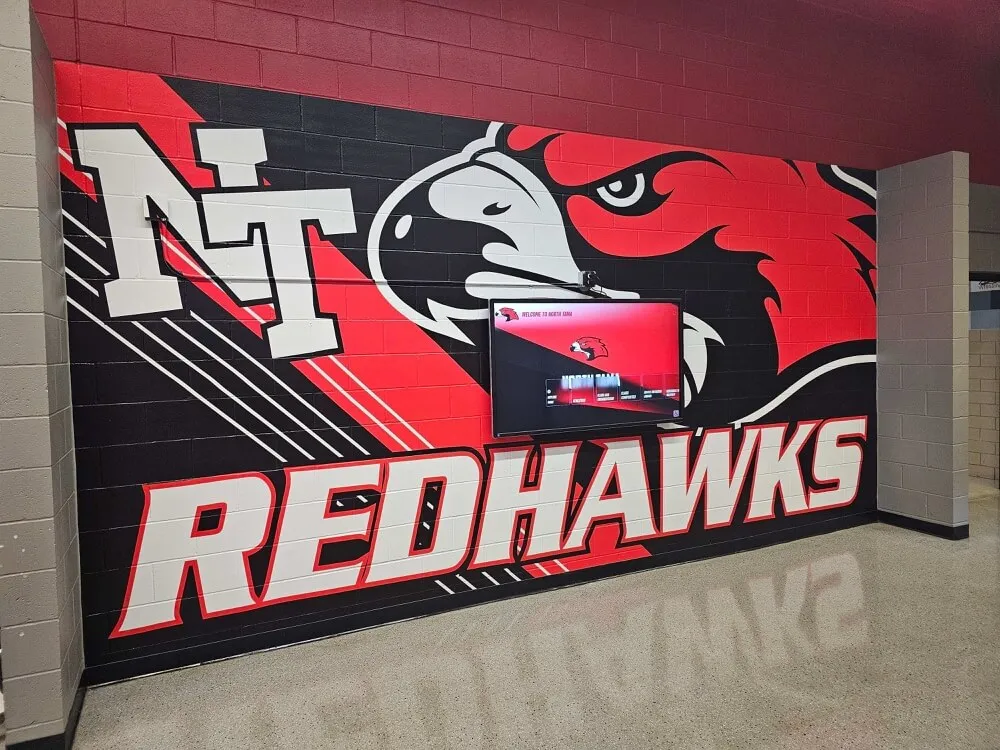
Measuring Program Impact and Success
Effective sportsmanship recognition programs warrant evaluation ensuring they achieve intended goals and identifying opportunities for continuous improvement.
Defining Success Indicators
Clear metrics help schools assess whether sportsmanship programs create desired cultural impacts. Consider tracking participation trends including percentage of athletes nominated for sportsmanship recognition annually, distribution of recognition across sports, genders, and class levels, and patterns suggesting whether recognition reaches broad athlete populations.
Behavioral indicators might include reduction in unsportsmanlike conduct incidents or ejections, improvement in officials’ ratings of school sportsmanship, fewer behavioral problems at athletic events, and positive feedback from opposing coaches and schools about athlete conduct.
Cultural metrics could assess athlete survey responses about team culture and values emphasis, community perception of athletic program character and integrity, family satisfaction with athletic program values and character development, and coach observations about sportsmanship norm development within programs.
Gathering Stakeholder Feedback
Quantitative metrics tell only part of the story. Qualitative feedback provides crucial insights that numbers cannot capture. Conduct confidential athlete surveys exploring whether athletes understand sportsmanship criteria, feel recognition processes are fair, believe sportsmanship emphasis influences their behavior, and value character recognition alongside competitive achievements.
Gather coach perspectives about how sportsmanship recognition affects team cultures, which selection processes work most effectively, what challenges they face emphasizing character alongside competitive goals, and how recognition could better support their coaching goals.
Seek family feedback about whether sportsmanship recognition influences how students discuss athletics at home, affects families’ perceptions of athletic program values, and feels meaningful and authentic rather than perfunctory.
Request official and opposing coach input about observable improvements in athlete sportsmanship over time, specific athletes who demonstrated notable character, and how school’s sportsmanship compares to others in conference or region.
Continuous Program Refinement
The most effective programs evolve based on evidence and feedback rather than maintaining unchanged practices. Conduct regular program reviews assessing whether current criteria effectively capture behaviors schools want to recognize, determining if selection processes feel fair and comprehensive, evaluating if recognition receives appropriate emphasis and visibility, and identifying specific improvements for coming seasons.
Be willing to adjust criteria, selection processes, presentation methods, and recognition elements based on experience while maintaining core commitment to values-based recognition that complements competitive achievement.
Building Sustainable Programs for Long-Term Impact
Sportsmanship recognition creates greatest value when sustained consistently over years rather than implemented sporadically when individual administrators or coaches prioritize character emphasis.
Institutionalizing Recognition Processes
Sustainability requires embedding sportsmanship recognition in standard athletic program operations through documented policies and procedures that persist beyond individual leaders, budget allocations ensuring resources for recognition materials and celebration, staff position responsibilities explicitly including sportsmanship program coordination, calendar integration establishing predictable timelines and processes, and governance oversight ensuring programs maintain standards and emphasis over time.
Institutionalization transforms sportsmanship recognition from initiative dependent on specific individuals into permanent program element that continues regardless of staff turnover.
Documenting Program History and Tradition
As programs mature, historical recognition creates traditions that future athletes aspire to join. Use digital recognition displays preserving complete sportsmanship award history across decades, alumni engagement highlighting how former recipients attribute personal development to character emphasis, historical documentation explaining program evolution and philosophy, and tradition-building language emphasizing honor of joining distinguished group of previous sportsmanship award recipients.
Strong traditions create self-reinforcing cultures where sportsmanship becomes “how we do things here” rather than top-down requirement needing constant enforcement.
Leadership Transition Planning
Ensure program sustainability through leadership changes by creating comprehensive documentation of all processes, criteria, and practices, training incoming athletic directors and coaches on sportsmanship program importance, involving multiple staff in program administration rather than single-person dependency, and securing administrative commitment to maintaining programs regardless of leadership transitions.
Programs surviving multiple leadership transitions demonstrate true institutionalization and cultural embedding rather than remaining dependent on specific individuals’ priorities.
Conclusion: Character That Lasts Long After Final Whistles
Friday night lights eventually dim. Senior seasons conclude. Championship trophies accumulate dust in storage. But the character students develop through meaningful sportsmanship emphasis shapes who they become for decades after their final competitions. High school sportsmanship award programs recognize and reinforce the values, integrity, and respect that define truly excellent athletic programs and complete student-athletes.
When implemented thoughtfully, sportsmanship recognition accomplishes multiple essential goals. It validates that schools value character as much as competitive success, creating balanced athletic programs developing complete students. It teaches life lessons about integrity, respect, and perspective that serve students throughout personal and professional lives far more than any athletic skill. It builds positive cultures within teams and broader school communities where values become expected norms rather than exceptional behavior. It enhances competitive excellence by developing disciplined, focused athletes who compete with both skill and character. And it fulfills educational missions by demonstrating that athletic programs contribute meaningfully to youth development beyond entertainment or winning percentages.
The pathway to effective sportsmanship recognition requires several essential elements: clear criteria defining observable behaviors that demonstrate values, fair selection processes gathering input from multiple perspectives, meaningful presentation that appropriately celebrates character alongside competitive achievement, modern recognition solutions preserving and showcasing sportsmanship across generations, integration with broader character education initiatives throughout schools, and sustained commitment maintaining emphasis through leadership transitions and cultural evolution.
Modern digital recognition solutions like Rocket Alumni Solutions make it easier than ever to create comprehensive sportsmanship recognition that honors past recipients while inspiring current athletes. Interactive touchscreen displays deployed in athletic facilities preserve recognition indefinitely, tell rich stories about character demonstrated by award recipients, provide searchable historical archives spanning decades, and integrate sportsmanship with broader athletic achievement recognition. These platforms ensure character recognition receives visibility and emphasis equal to competitive accomplishments while requiring minimal ongoing administrative burden through intuitive content management systems.
Your student-athletes will forget most game scores within years. Many will struggle to recall specific statistics that once seemed crucially important. But the lessons they learn about competing with character, treating others with respect, maintaining integrity under pressure, and displaying grace in victory and defeat will shape their relationships, careers, and life satisfaction for decades.
High school sportsmanship awards formalize your school’s commitment to developing character alongside competitive skill. They recognize publicly that how students compete matters as much as whether they win. And they create lasting traditions celebrating the values that define truly excellent athletic programs where success means more than scoreboards can ever measure.
Ready to create sportsmanship recognition worthy of the character your student-athletes demonstrate? Modern digital recognition displays provide proven solutions honoring values and integrity while building program cultures where excellence encompasses both skill and character. Your student-athletes demonstrate remarkable character throughout every season—they deserve recognition that matches their commitment to competing with integrity.
